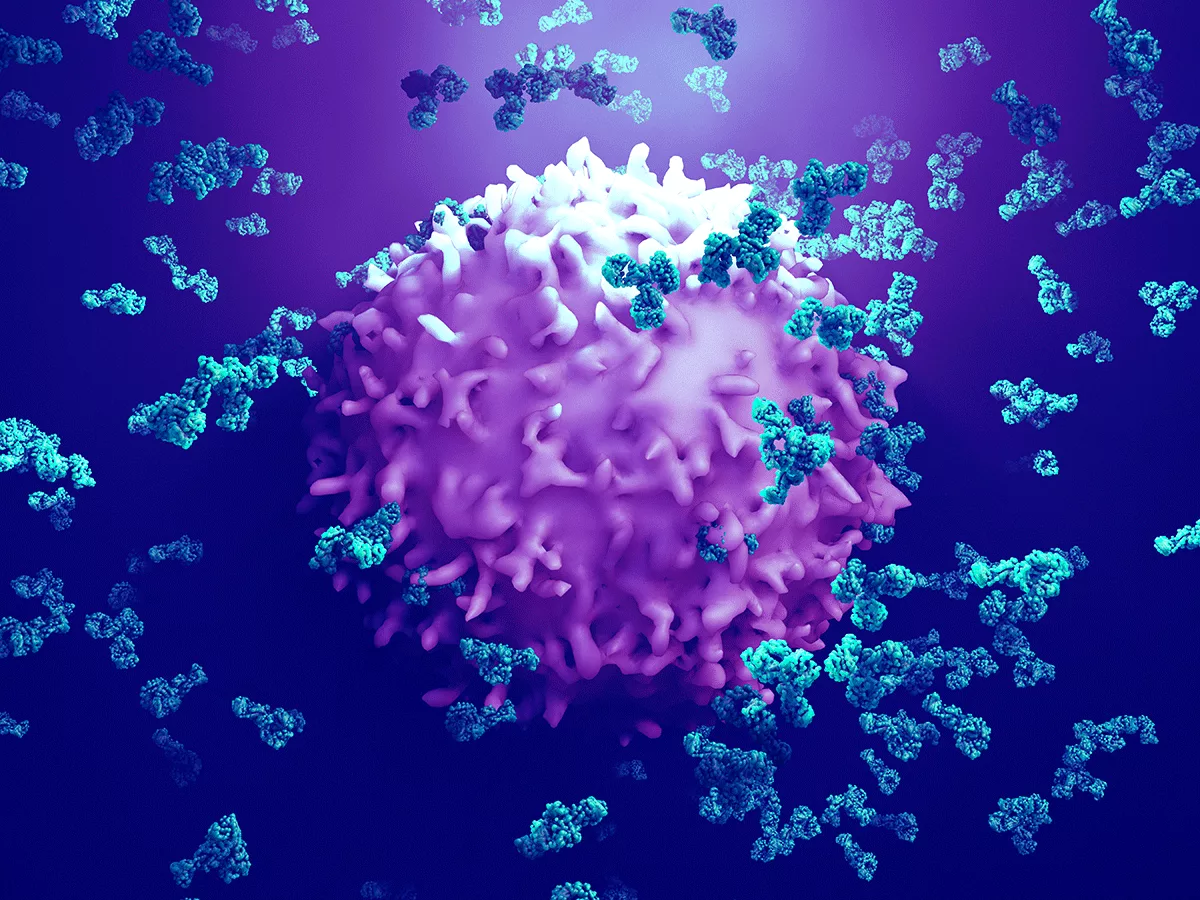Two targets, double success. This is the logic behind a new approach that uses monoclonal antibody (MAb) pairs to fight cancer. The two MAbs in the pair have different specificities and form heterohexamers on the surface of the cells expressing the two antigens. The hexamers, in a specific order, provide the binding sites for the C1 complement complex, activating the complement-dependent cytotoxicity (CDC) only when both MAbs have bound.
Researchers at Genmab and Leiden University in collaboration with the University of New Mexico, presented this technology (known as Hexelect) in a new study published in the July 25, 2022, issue of Nature Biotechnology. This work opens the door to numerous treatments by improving the specificity of an antibody.
On the one hand, this design increases the accuracy of the drug (it binds only to target cells, those that express two antigens). On the other, it reduces unwanted side effects (it does not affect healthy cells, which only express one).
"The Hexelect technology consists of pairs of antibodies designed to work together in a mutually dependent fashion," Rob de Jong, senior director of antibody research & technology, format development lead at Genmab, told BioWorld Science. De Jong explained that the functional activity of the antibodies is only induced on cells bound by both antibody components simultaneously. "The two antibody components are thought to hetero-oligomerize like the two edges of a zipper."
What sets apart the Hexelect technology, he added, is that the specificity of Hexelect-based therapeutics is not only regulated by the differential antigen expression between healthy and diseased tissue (as is the case for natural antibodies), but also by this antibody hetero-oligomerization.
This laboratory is specialized in therapeutic antibodies for the treatment of cancer. They have developed different technologies known as Duobody, Hexabody, DuohexabodyHexabody, or Hexelect. Duobody are bispecific antibodies (dual-targeting molecules) that bind to two different epitopes. Hexabody enhances the assembly of antibody hexamers after binding its target at the cell surface. And DuohexabodyHexabody is a combination of both.
Natural IgG antibodies can assemble into oligomeric structures after cell surface binding if the target antigens allow for it. In particular, the formation of hexameric rings by natural antibodies enables the activation of the complement system, an innate immune defense mechanism.
The new technology revealed now, Hexelect, combines two Hexabody molecules only active on those cells that express two targets. "We previously built on this knowledge to create the Hexabody technology, which can promote antibody hexamerization and complement activity, but can also be used to activate cell surface receptors sensitive to clustering," de Jong said. To create Hexelect antibody pairs, "we had to find an optimal way of both hitting the gas -- promoting hetero-hexamerization -- and hitting the brakes -- preventing self-oligomerization -- at the same time." In a related News and Views article published simultaneously, Robert Lawrence and Peter Senter, researchers at Seagen, note that these antibody pairs are easy to design from existing antibody clones. The advantage of this technology is that it does not require the difficulty of designing complex transcriptional regulatory circuits in living cells, as occurs with chimeric antigen receptor (CAR) T cells.
Hexelect has been validated with antibodies against CD52 (expressed on normal hematologic cells), CD20 (expressed only on mature B cells) or CD37 (abundant on mature B cells and with a lower expression on T and myeloid cells), and introduced mutations E430G, K439E and S440K to improve the hexamer.
Genmab's researchers used models of chronic lymphocytic leukemia. Given that C1q is involved in the complement system, other applications are possible. "We show examples of how we can regulate complement activity to lyse tumor cells that express specific target combinations," de Jong commented. "In theory, any target or antibody activity affected by clustering could be modulated by Hexelect therapeutics."
However, Lawrence and Senter also remark on some of the limitations of Hexelect's design. It is likely, they say, that heterohexamer technology could be restricted to targets located close to the cell surface, which have bound epitopes near the membrane. They also mention that these antibodies target tumors that are sensitive to the CDC, although many of them are not. "The extent to which this approach will translate clinically using antigen pairs that have highly heterogenous expression and stoichiometries remains to be seen," they wrote.
That will be de Jong's next step. "Which cell surface receptor target combinations may benefit most from this technology is an area of active investigation," he mentioned. Now, they can combine different approaches "to explore if the Boolean logic AND-gated nature of this technology may enable novel product classes and inform the design of other Boolean logic gates based on this antibody platform technology."

